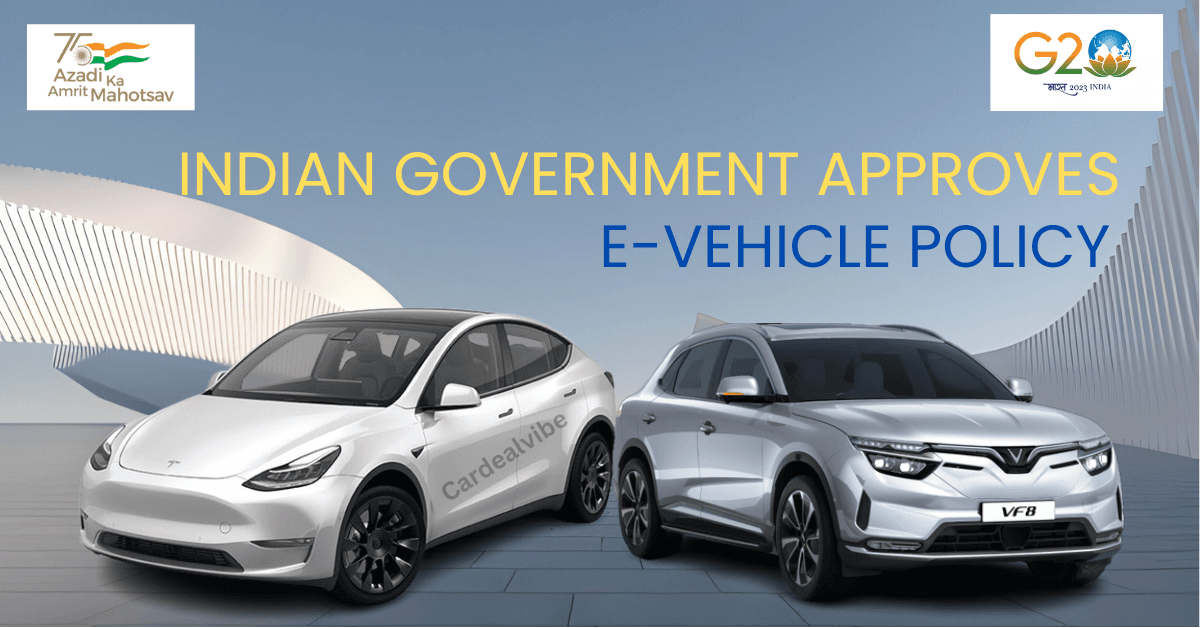 News & Top Stories
News & Top StoriesA new e-vehicle strategy has been approved by the Indian government to position the country as one of the world’s leading centers for EV manufacturing. Due to high import duties that make their goods too expensive for their target users, international EV manufacturers are currently reluctant to enter the Indian market. If certain requirements are completed, this policy will enable these companies to import their EVs into India as completely built-up (CBU) units at much cheaper import duties.
Which Parameters Are There?
- The guidelines are more akin to restrictions put in place for major international brands by the Indian government. They are listed in the following order
- Within three years, the multinational EV manufacturers must establish a production facility in India with a minimum expenditure of Rs 4150 crore (about USD 500 million).
- Additionally, they must ensure that by the third year, they have achieved 25% localization, and by the fifth year, 50% localization. Additionally, within the first three years, they must begin producing their electric vehicles on a commercial basis.
- The imported electric vehicle must have a minimum CIF value of about Rs 28.99 lakh (USD 35,000) (cost + insurance + freight).
- With this benefit, EV manufacturers will be allowed to import a maximum of 8,000 of their vehicles annually.
- Not only that, but the brand’s investment must be supported by a bank guarantee; if the business doesn’t meet the deadlines mentioned above, it won’t receive its money back.
What Advantage Is There?

The producer of electric vehicles (EVs) will be permitted to import its products at a reduced import tax of only 15 percent if it receives approval from the Ministry of Heavy Industries (HMI), makes the investment that is supported by a bank guarantee, and guarantees to meet the other requirements in the allotted time. To put that in context, the standard import tax for CBUs is an astounding 100%, which is the reason why businesses can’t sell enough of their imported goods in India.
Arrival of Other Brands & Tesla

With lower import duties for electric vehicles, Tesla has made no secret of its intention to join the Indian market. To bring its well-liked electric vehicles to India, such as the Tesla Model 3 and Model Y, which would have cost the same as luxury EVs at higher import rates, the American automaker frequently cited such tariffs as one of the chief barriers. Tesla may now be able to implement its plans in India with the aid of this e-vehicle regulation, provided that it meets the specified requirements.
VinFast is another EV manufacturer that has been holding back on joining the Indian market, but they too stand to gain from this strategy. Due to its ongoing efforts to establish local manufacturing in the nation, the Vietnamese brand enjoys a modest advantage.
Long-Term Advantages Of The New Law

We understand that this will push international manufacturers to introduce their EVs into India sooner rather than later, but how does this benefit the populace and the government? To benefit from this policy, corporations will need to establish manufacturing facilities in India rather than simply importing automobiles, which will lead to the creation of additional jobs. Additionally, since these businesses must achieve 50% localization to profit, it will help some Indian businesses that supply parts for electric vehicles increase sales and foster the growth of these businesses in India.
People will have access to international automotive innovations, and because of the policy’s lower import taxes and localization, they will be more reasonably priced. To lessen environmental pollution and transition to a greener and more sustainable future, the Indian government also intends to encourage the use of EVs in India.
Also Read: Mahindra XUV700 Sales In February 2024